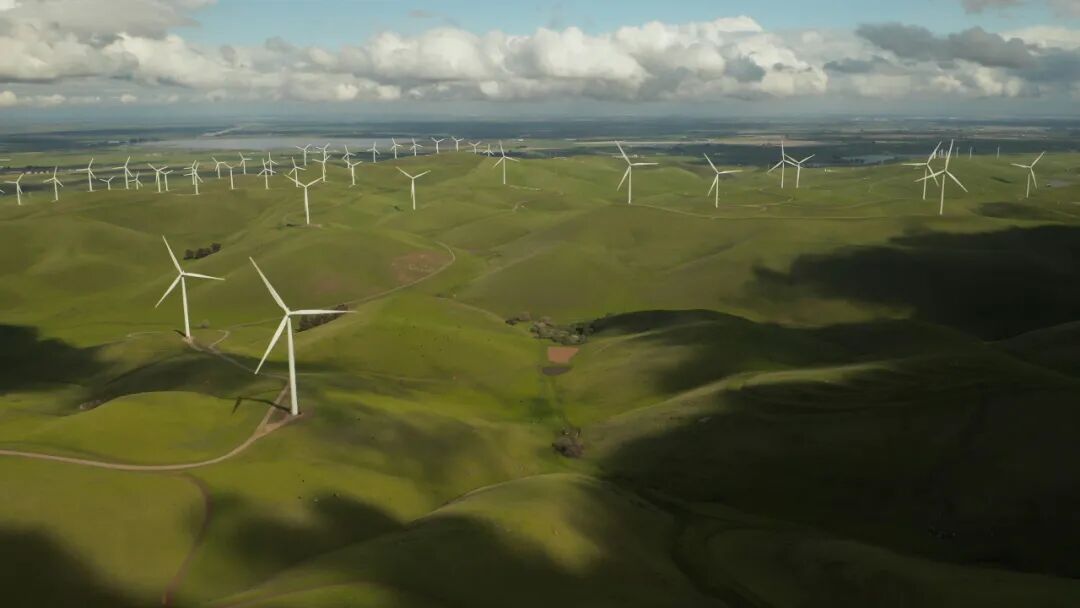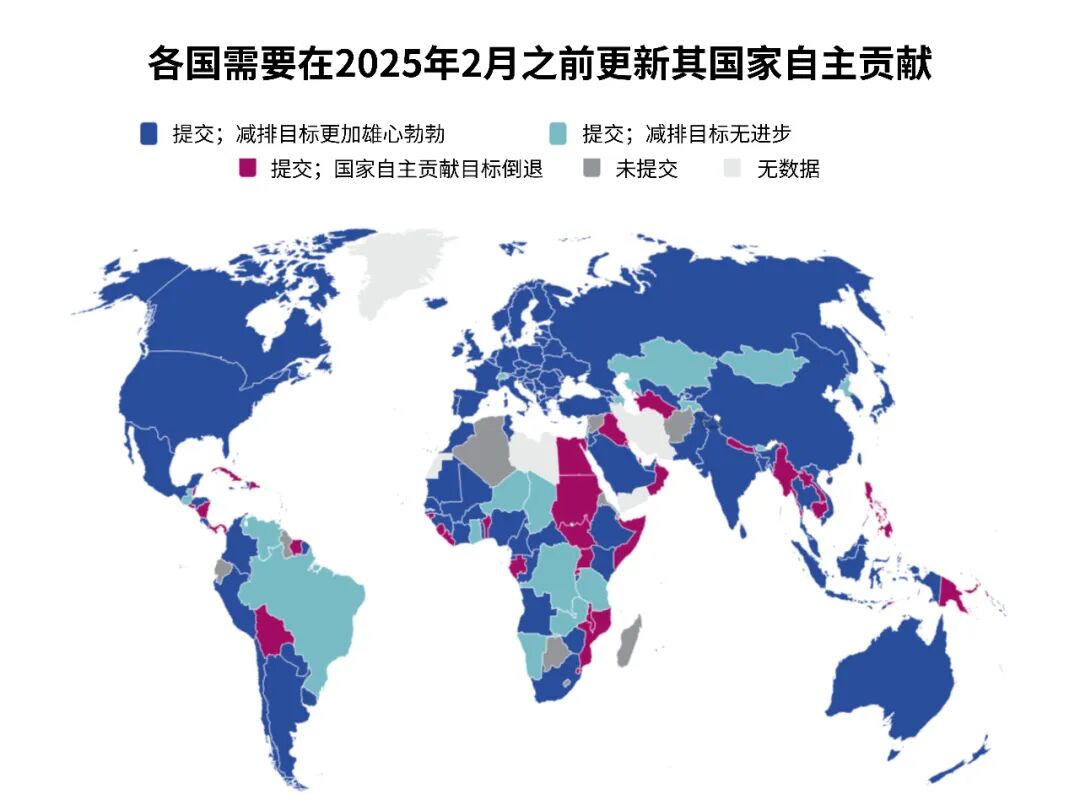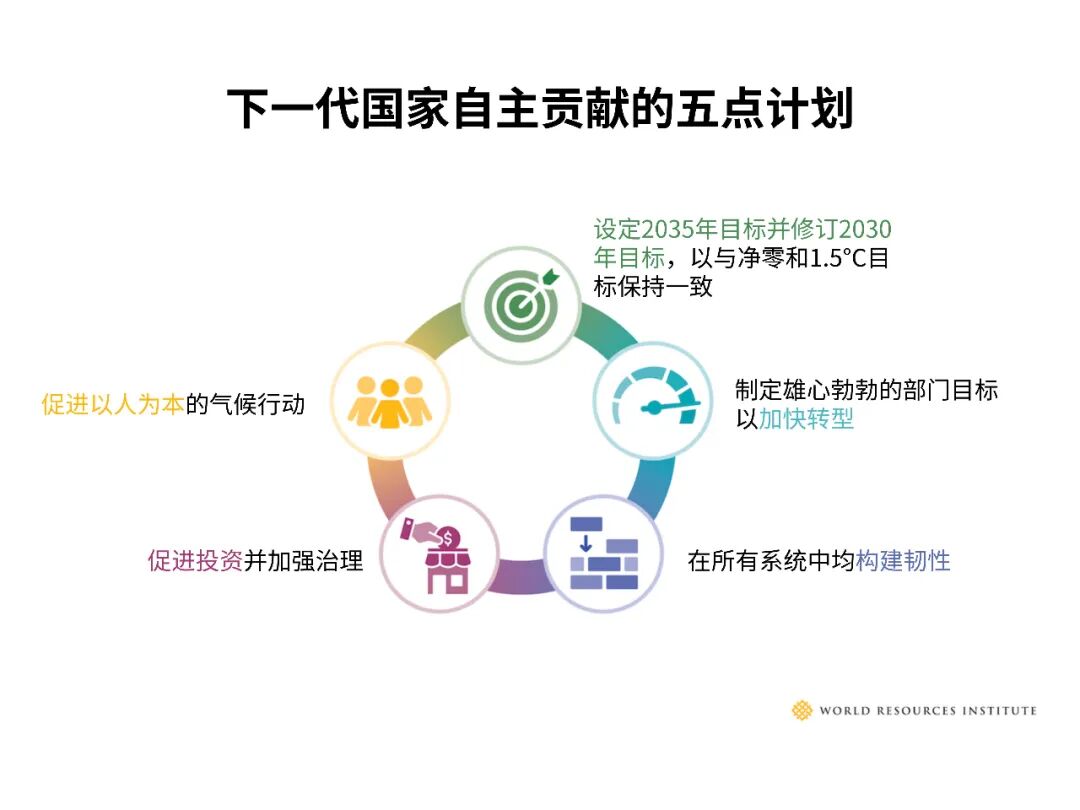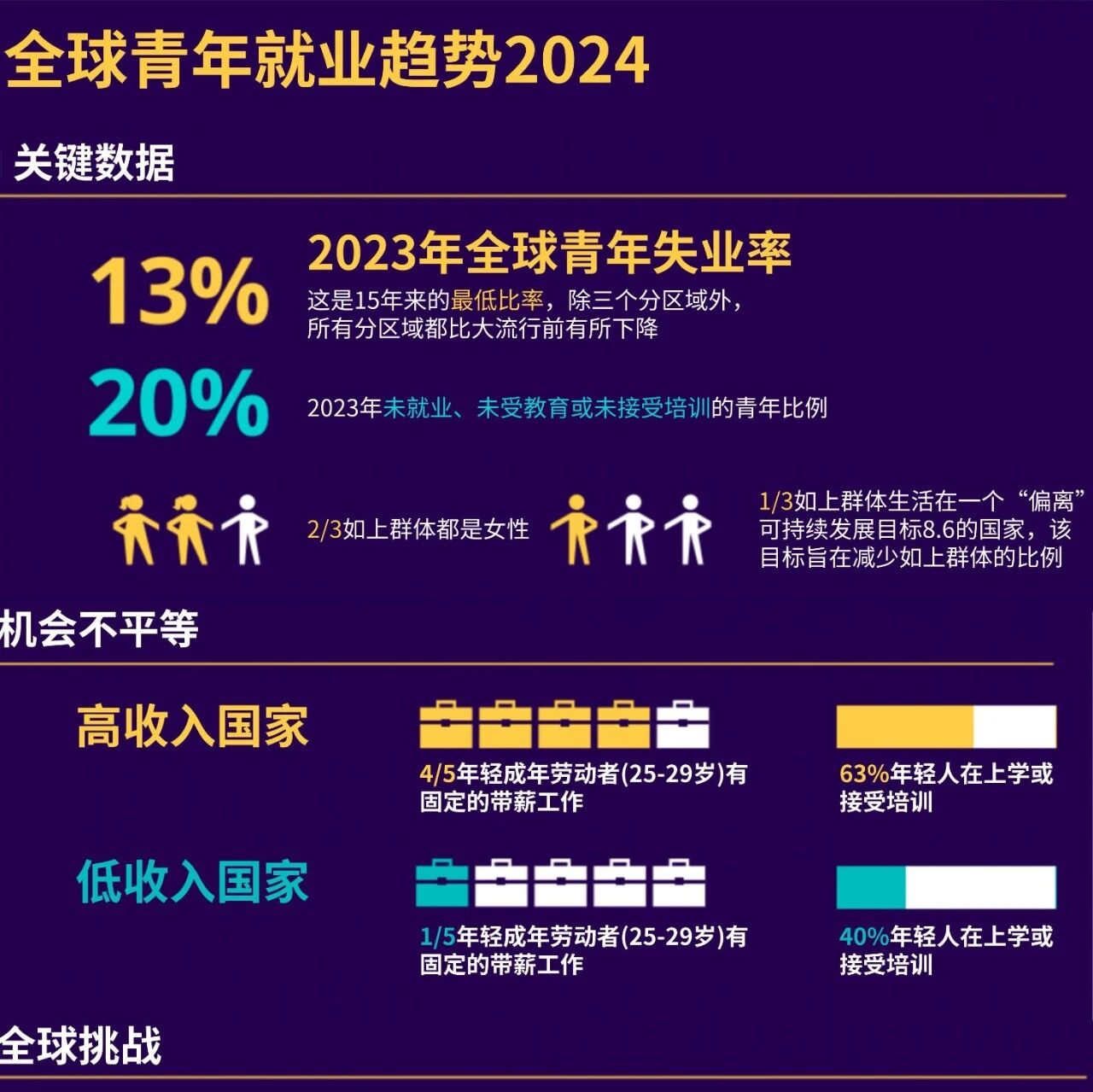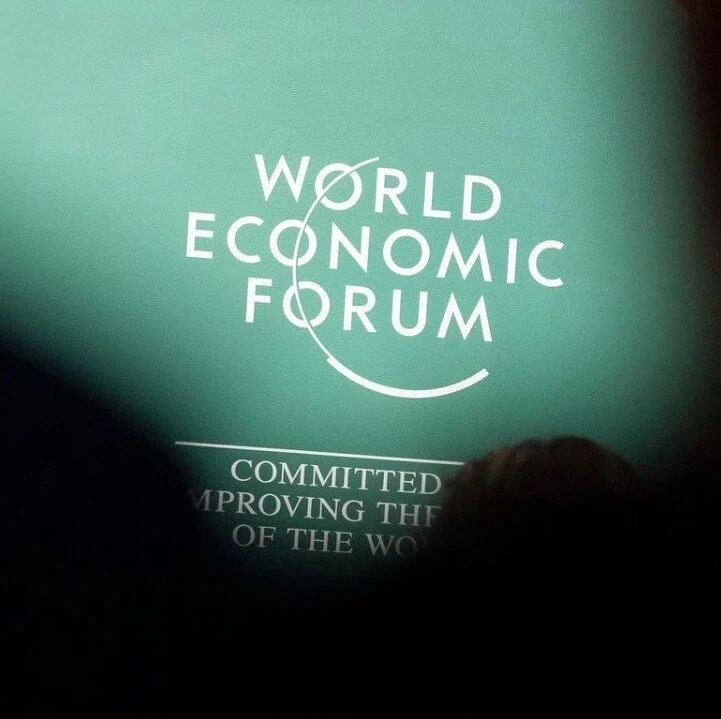Countries must update their Nationally Determined Contributions by February 2025, and some nations may announce their targets at COP29 in November.
Image source:Unsplash/Tyler Casey
Kate Whiting
Senior Writer for the Forum Agenda
According to the Paris Agreement, countries are required to update their Nationally Determined Contributions by February, and some nations may announce their updated targets at the COP29 conference in November.
But are the current Nationally Determined Contributions sufficient to limit global temperature rise to within 1.5°C above pre-industrial levels?
According to the World Economic Forum's white paper, "Carbon Dioxide Removal: A Guide to Best Practices," scaling up CO2 removal technologies is critical for achieving net-zero goals.
Climate change experts and leaders will gather in Azerbaijan in November 2024, at a time when this year is on track to become the hottest on record.COP29—the 29th Conference of the Parties to the United Nations Framework Convention on Climate Change—will focus on "enhancing ambition," ensuring that countries commit to ambitious national targets aimed at cutting greenhouse gas emissions.These commitments, known as Nationally Determined Contributions, serve as the cornerstone of global efforts to tackle climate change. The deadline for updating these pledges is early 2025.But what exactly is a Nationally Determined Contribution? And why is it so important?Nationally Determined Contributions and the Updated "Ratchet Mechanism"The Nationally Determined Contributions are at the heart of the 2015 Paris Agreement. The Paris Agreement was adopted at the 21st session of the United Nations Climate Change Conference. All parties agreed to limit global warming to well below 2°C above pre-industrial levels, with an ambitious goal of "pursuing efforts to limit the temperature increase to 1.5°C above pre-industrial levels."The Paris Agreement is legally binding, setting increasingly ambitious climate action targets in five-year cycles.This approach is known as the "ratchet mechanism," as countries are steadily "upgrading" their plans to achieve the 2050 net-zero emissions target.Nationally Determined Contributions include each country’s commitments and specific targets for reducing greenhouse gas emissions, as well as the measures countries are taking to adapt to climate change, along with the implementation strategies and timelines for achieving these goals.As the name suggests, each country has its own unique approach, reflecting its specific circumstances, capabilities, and priorities in tackling climate change.The first set of Nationally Determined Contributions was a consensus outcome agreed upon by all 196 parties to the Paris Agreement. The commitments were first updated in 2020, and the next deadline for revising these pledges is February 2025. The ultimate goal is to fully deliver on these commitments by 2035.Which countries have already set their Nationally Determined Contributions?Some countries will announce the second update of their Nationally Determined Contributions at the COP29 meeting in November, aiming to meet the February deadline.For example, in August of this year, the UK’s Secretary of State for Energy Security and Net Zero wrote to the Climate Change Committee, asking it to provide guidance by the end of October on the country’s 2035 Nationally Determined Contribution.Once submitted, all Nationally Determined Contributions will be stored in the UN Framework Convention on Climate Change’s NDC Registry—where you can also review previous updates—and several countries, including Chile and the UK, have already enshrined their NDCs into law.Countries need to update their Nationally Determined Contributions by February 2025.
Image source:World Resources Institute
The World Resources Institute's Climate Watch platform will launch an interactive Nationally Determined Contributions tracker ahead of COP29, enabling users to monitor and analyze the newly submitted reports.As a catalyst for national climate policies and action, the Nationally Determined Contributions have spurred investments in clean energy, sustainable transportation, and climate-resilient infrastructure.The Nationally Determined Contributions also enhance transparency and accountability in global climate efforts, as countries are required to regularly report their progress.The detailed, ambitious, and credible Nationally Determined Contributions set emissions-reduction targets for key polluting sectors such as energy and transportation, while ensuring that domestic policies like fossil fuel subsidies do not undermine progress.The level of detail could include plans for job creation in the clean technology industry, as well as an overview of projects, policies, and financing needs that actually help attract investment.Are the current Nationally Determined Contributions enough to limit global warming?The World Resources Institute states that current Nationally Determined Contributions fall far short of limiting global warming to below 1.5°C. "The actions outlined in the existing NDCs could lead to a catastrophic rise in global temperatures of 2.5–2.9°C by 2100," it warns.In 2023, the Intergovernmental Panel on Climate Change highlighted in its five-year assessment report that, to limit global temperature rise to within 1.5°C, emissions must be reduced by at least 43% below 2019 levels by 2030—and by at least 60% by 2035.In April 2024, experts from the World Resources Institute outlined a five-point plan for the next round of Nationally Determined Contributions, urging governments to "go further in emissions reductions than their current NDCs."Historically, developed countries have been the world's largest emitters, and they also bear the responsibility to "cut emissions as much as possible while providing additional funding to help developing nations accelerate their climate efforts."The five-point plan for the next generation of Nationally Determined Contributions.
Image source:World Resources Institute
In 2023, an analysis by the United Nations Development Programme found that developing and fragile countries are "making tangible progress toward achieving their ambitious goals." For instance, African nations have demonstrated stronger commitments than the global average.Some countries, including Germany, have indicated their intention to adopt "net-negative" targets, meaning greenhouse gas reductions will exceed emissions. This goes beyond the net-zero emissions goal, striking a balance between the two.In December 2023, at COP28, Denmark, Finland, and Panama established the Net-Zero Emissions Group. In July 2024, the UK Committee on Climate Change reported that "currently, credible plans cover only one-third of the emissions reductions needed for the country to meet its 2030 targets."How carbon removal technologies can helpWhile reducing carbon emissions into the atmosphere remains the most urgent challenge, accelerating the pace of carbon removal is equally critical to achieving the Paris goals.The Intergovernmental Panel on Climate Change states that achieving net-zero emissions will require "significantly reducing overall fossil fuel consumption, minimizing the use of unabated fossil fuels, and deploying carbon capture and storage in remaining fossil-fuel systems; conserving energy and improving energy efficiency; and strengthening integration across the entire energy system."Innovations are needed in carbon capture and storage, as well as carbon capture and utilization, to rebalance atmospheric CO2 levels and prevent future warming.However, given the urgency, scaling up "engineered" carbon dioxide removal technologies—such as bioenergy with carbon capture and storage, direct air carbon capture and storage, and enhanced rock weathering—is also critical."Even if every country and every company achieves net-zero emissions by 2050, it still won’t be enough. We’ll need to continue removing CO2 over the coming decades to reverse the accumulated impact of historical emissions," writes Nasim Pour, Head of Carbon Removal and Market Innovation at the World Economic Forum, in the white paper *CO2 Removal: A Guide to Best Practices*.The World Economic Forum’s Pioneers Community is an organization dedicated to accelerating decarbonization in hard-to-abate industries. Its members have committed to securing contracts by 2030 to deliver 50,000 tons—or $250.05 million worth—of permanent and scalable carbon removal services.The above content solely represents the author's personal views.This article is translated from the World Economic Forum's Agenda blog; the Chinese version is for reference purposes only.Feel free to share this on WeChat Moments; please leave a comment below the post if you’d like to republish.
Editor: Wang Can
The World Economic Forum is an independent and neutral platform dedicated to bringing together diverse perspectives to discuss critical global, regional, and industry-specific issues.
Follow us on Weibo, WeChat Video Accounts, Douyin, and Xiaohongshu!
"World Economic Forum"

